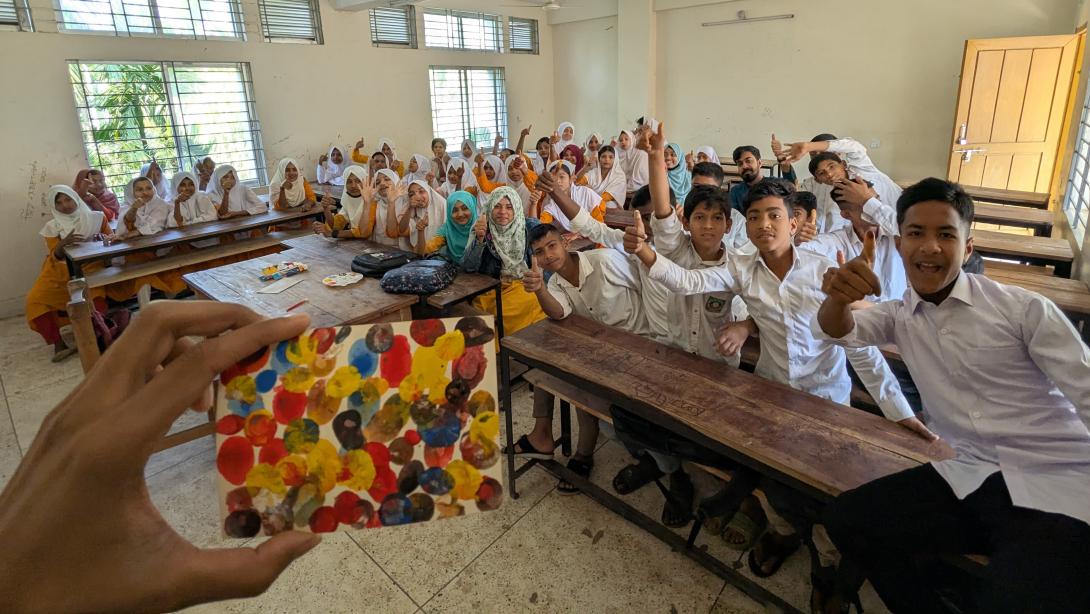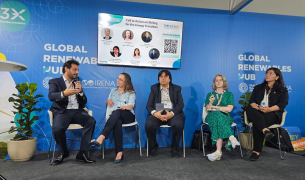Inclusion starts with "Hello"

Language has been one of the most powerful tools for both inclusion and exclusion. Dominant languages can overpower those spoken by minorities, something we have seen happen during the colonial period and even in the modern day classroom. But what happens when someone does not speak at all? How are we creating space for them in our classroom?
An unexpected encounter
On the first day of class this year, as a second year Teach For Bangladesh fellow, I was trying to get to know the new set of students in my high school classroom by asking them questions to learn their names, hobbies, and dreams. When I got to Sophie (name changed for anonymity), her friend answered for her. They were sitting at the last bench in the class. I was a bit curious and so I gently encouraged Sophie to speak for herself, not realizing her condition. Her friend explained that Sophie has verbal impairment and even though she can hear, she does not speak. I saw a sudden change in the environment in my classroom and heard some giggles and saw some curious stares and googly eyes.
This kind of reaction was not surprising, but still felt heavy. Even though I have a speech and language therapy background, I had never taught someone like Sophie. I asked if she could sign, and her friend explained that she just pointed to things in her own way—but she could write to communicate.
Sophie's posture and expression sent a clear message that she felt like she didn’t belong there. I knew I had to do something in this scenario.
A language everyone could share
After the introductory activity, to shift the energy, I suggested something fun. My students became curious. “Did you know we can speak without even making any sound?" I asked. "Let’s learn how to do that today!” Their curiosity turned to excitement and I started teaching them the alphabets of American Sign Language (ASL). We practiced our names, then simple words like "me," "we," "us," "school," "home" and other basic nouns. The vocabulary was simple, but I tried to share all I could remember from the sign language course I took back in university. For the first time, Sophie lit up and was having fun. This joy was not for her, it was with her. She signed her name and so did the others with excitement.
The power of the environment
That day changed everything for me. I realized that inclusion is not about the intervention or the activity, it is about mindset and changing the environment around students with special learning needs. When everyone in the community knows how to connect, that’s how we foster real inclusion.
Language has always held power. In 1952, students in Bangladesh gave their life for their right to speak their mother tongue, which reminds us that language can be core to one's identity. It can exclude or include.
When we created space for Sophie, we all learned the powerful lesson that the classroom is a space where everyone belongs.
Since that day, my students have been very excited about continuing to learn ASL. They are always curious, asking questions—even the shy ones. The atmosphere of the classroom is now collaborative and accepting.
Though I did not know it at the time, Universal Design Learning (UDL), specifically the principle of offering multiple means of communication and engagement, incorporates such approaches. The teaching and learning of ASL was not about Sophie adapting for us, it was about us adapting for Sophie.
Recently I asked Sophie if she has “a few friends” or “a lot of friends” and she smiled and demonstrated “a lot.”
From my point of view, you don’t need to know sign language or have a degree in special education to foster a more inclusive classroom. All you need is empathy, curiosity, a growth mindset, and lots of love.
You can practice inclusion by:
- Showing your students that every single one of them matters to you
- Creating space for students who have been—or feel—left behind
- Celebrating differences in your classroom
Your effort and love will always reach your students: You matter!
What’s next?
Inclusion can not be achieved in a one-day activity, it is a mindset which can be achieved by practicing empathy through generations. That first day with Sophie continues to remind me, it is not always about system or policy, it can be about a simple “Hello!”
What can you do for your students in the classroom to help them feel seen and heard? You can always start with this question and see the magic yourself.



